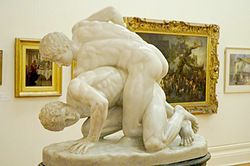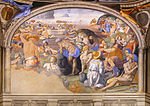Museo Galileo

Museo Galileo, the former Istituto e Museo di Storia della Scienza (Institute and Museum of the History of Science) is located in Florence, Italy, in Piazza dei Giudici, along the River Arno and close to the Uffizi Gallery. The museum, dedicated to astronomer and scientist Galileo Galilei, is housed in Palazzo Castellani, an 11th-century building which was then known as the Castello d’Altafronte. Museo Galileo owns one of the world's major collection of scientific instruments, which bears evidence of the role that the Medici and Lorraine Grand Dukes attached to science and scientists. The Museo di Storia della Scienza has re-opened to the public under the new name Museo Galileo since June 10, 2010, after a two-year closure due to redesigning and renovation works. It has been inaugurated four hundred years after the publication in March 1610 of Galileo's Sidereus Nuncius (The Starry Messenger).
Excerpt from the Wikipedia article Museo Galileo (License: CC BY-SA 3.0, Authors, Images).Museo Galileo
Schloßberg,
Geographical coordinates (GPS) Address Nearby Places Show on map
Geographical coordinates (GPS)
| Latitude | Longitude |
|---|---|
| N 43.767755555556 ° | E 11.255955555556 ° |
Address
Schlossbergschule
Schloßberg 2
04720 , Sörmitz
Sachsen, Deutschland
Open on Google Maps









